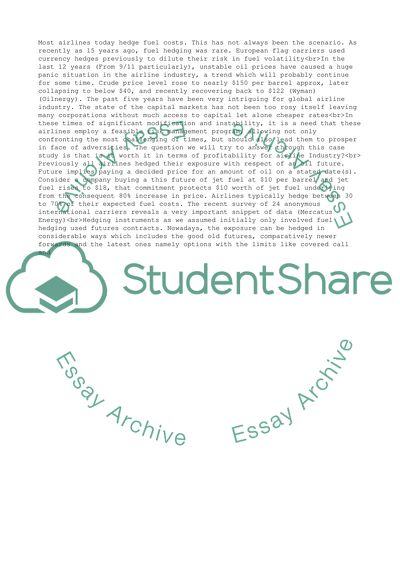Cite this document
(“Is Fuel Price Hedging profitable for airline industries Article”, n.d.)
Is Fuel Price Hedging profitable for airline industries Article. Retrieved from https://studentshare.org/business/1607677-is-fuel-price-hedging-profitable-for-airline-industries
Is Fuel Price Hedging profitable for airline industries Article. Retrieved from https://studentshare.org/business/1607677-is-fuel-price-hedging-profitable-for-airline-industries
(Is Fuel Price Hedging Profitable for Airline Industries Article)
Is Fuel Price Hedging Profitable for Airline Industries Article. https://studentshare.org/business/1607677-is-fuel-price-hedging-profitable-for-airline-industries.
Is Fuel Price Hedging Profitable for Airline Industries Article. https://studentshare.org/business/1607677-is-fuel-price-hedging-profitable-for-airline-industries.
“Is Fuel Price Hedging Profitable for Airline Industries Article”, n.d. https://studentshare.org/business/1607677-is-fuel-price-hedging-profitable-for-airline-industries.


